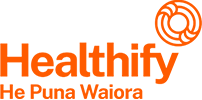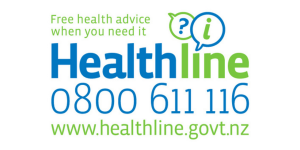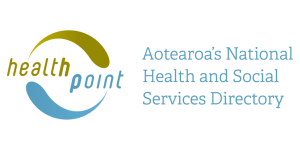Breast screening and BreastScreen Aotearoa
Key points about breast screening and BreastScreen Aotearoa
- About 1 in 9 women in Aotearoa New Zealand are affected by breast cancer. It's the most common type of cancer in women.
- BreastScreen Aotearoa is a free national breast screening programme for eligible New Zealand women that checks for signs of early breast cancer using mammograms.
- Its purpose is to find cancer early so that it can be treated and have the best chance of a cure.
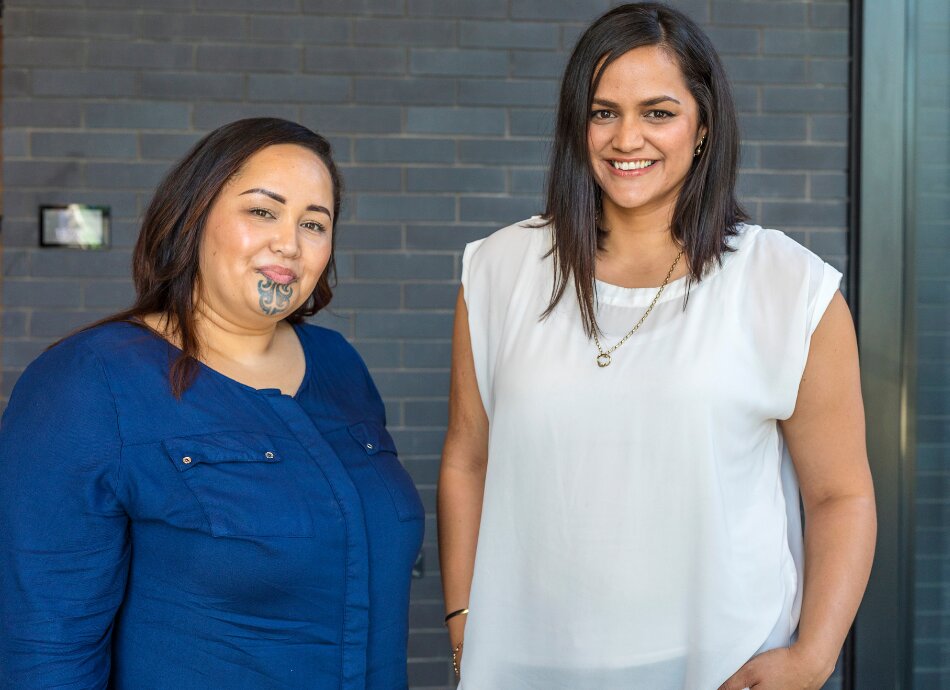
BreastScreen Aotearoa is a free national breast screening programme for eligible New Zealanders to check for signs of early breast cancer. Find out who is eligible for free screening.
The purpose of the screening programme is to:
- find cancer at an early stage, which is when treatment has the best chance of leading to a cure
- reduce the number of women who die from breast cancer.
Breast cancer is the most common type of cancer in women. It affects about 1 in 9 New Zealand women over their lifetime. Find out more about breast cancer.
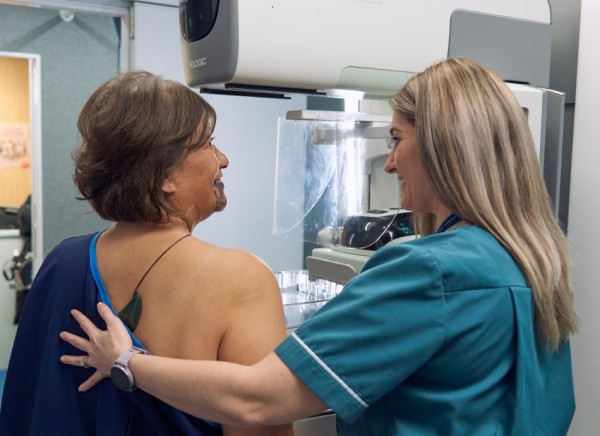
Image credit: Health New Zealand | Te Whatu Ora (with permission)
You are eligible to participate in BreastScreen Aotearoa if you:
- are a woman 45 to 69 years of age or, if you qualify for the extended age range, up to 74 years of age*
- have no symptoms of breast cancer
- have not had a mammogram in the past 12 months
- are not pregnant
- are entitled to public health services in Aotearoa New Zealand
- have been free of breast cancer for 5 years.
*Free breast screening in Aotearoa New Zealand is being extended to women 70 to 74 years of age. Read more about the extension of the screening programme eligibility(external link).
If you are breastfeeding, please tell your screening provider when you're arranging your appointment.
There are also screening support services available if you’re within the eligible screening age and:
- are Māori or Pacific, or
- have never had a breast screen or haven't had a screen in the last 5 years.
You can enrol, book or change your appointments, with the new online system – Te Puna. When you are due for your mammogram a BreastScreen Aotearoa provider will send you a secure personalised link or QR code via email, text or letter.
Once you’re enrolled, you’ll be sent a reminder every 2 years to have a breast screen.
To ensure you receive your invitation to the breast screening programme, make sure your contact details are up-to-date by checking them with your healthcare provider or calling 0800 270 200.
Screening sites are located throughout Aotearoa New Zealand and most have wheelchair access.
Mobile screening units also travel around the country. Visit BreastScreen Aotearoa clinics(external link) to find out when a screening unit is in your area.
Screening involves having a mammogram every 2 years. A mammogram is a type of X-ray. It's a digital picture that shows the inside of your breast to check for any signs of breast cancer.
During a breast screening appointment, you will be asked to undress from the waist up and offered a cape or gown to wear. You are welcome to bring your own covering as long as it doesn’t have metal buttons, clasps or zips.
During a mammogram, a mammographer will help position each breast between 2 plastic plates. Each breast is pressed between the plates until your breast flattens. This may feel a little uncomfortable but allows for a better image.
Each mammogram is checked by at least 2 specialist doctors (radiologists).
Read more about mammograms.
Video: BSA – you got this (captioned)
Screening saves lives
Mammograms help find cancer as early as possible by showing changes inside your breast before anything can be felt. Regular mammograms can reduce your risk of dying from breast cancer by more than a third.
Screening is a proven method of finding cancer
For women who participate in screening, mammograms can find 8 or 9 out of 10 cancers.
Less treatment is needed
Finding breast cancers early can mean less treatment than if cancer is found later and is more advanced.
Some cancers may not harm you
Mammograms can find small breast cancers that would not be found if you were not screened. Some of these cancers might never grow big enough to become life-threatening. This is the case for 10% of cancers found by breast screening and is called overdiagnosis.
Mammograms don't find all cancers
A mammogram may look normal even if cancer is somewhere in your breast. Because mammograms can miss some cancers, it's important to be aware of any changes to your breasts between mammograms.
Increased breast density is a known risk factor for breast cancer. Breast cancers can be masked by dense breast tissue, making them harder to diagnose using mammography. Breast density isn't currently measured as part of the BreastScreen Aotearoa (BSA) programme and Health New Zealand | Te Whatu Ora is actively exploring the integration of artificial intelligence (AI) to measure breast density in the future.
If you notice any changes to your breasts that are not normal for you, see your healthcare provider as soon as possible. Do not wait for your mammogram. These changes may not be cancer, but you need to have them checked by your healthcare provider.
Radiation
Like all X-rays, mammograms expose you to a small amount of radiation, but this is unlikely to cause harm. The dose of radiation is smaller with the new digital mammography.
Pain and worry
Breast screening can be uncomfortable or painful for some women as well as worrying. You can bring a support person or member of your whānau with you if you would like someone with you before and after your mammogram.
Your results will be sent to you within 3 weeks of having your mammogram. They can also be sent to your healthcare provider if you wish. If you’ve had mammograms elsewhere, BreastScreen Aotearoa needs to see these to compare the results with your current mammogram.
- Most people find their results are normal and they’re asked to return for their next mammogram in 2 years.
- A small number will be phoned to come back because there is something on the mammogram that needs a closer look.
- If you need more tests, this service is also free, and may involve another mammogram, ultrasound, a breast exam or a biopsy of breast tissue. This is where a small amount of breast tissue is removed for examination under a microscope.
- Most of the people recalled for more tests will not have breast cancer.
- If you do have breast cancer you’ll be referred to a specialist for treatment.
Read more about breast cancer treatment.
It's important to take the time to learn the normal look and feel of your breasts. Some signs to check for include:
- a new lump in your breast or armpit
- changes to your breast shape or size
- changes to the skin of your breast such as dimpling, puckering, or thickening
- changes in your nipple, such as turning inwards, ulcers, or a new itch
- nipple discharge or bleeding
- ongoing redness
- pain in your breast that doesn't go away.
Read more about breast cancer symptoms.
Mammograms(external link) Breast Cancer Foundation, NZ
Breast screening(external link) Health New Zealand | Te Whatu Ora, NZ
Brochures
Screening for breast cancer – joining BreastScreen Aotearoa(external link) HealthEd, NZ, 2025
Having a mammogram(external link) BreastScreen Aotearoa, NZ, 2025. 2024 versions available in Chinese (simplified)(external link), Hindi(external link), Japanese(external link), Korean(external link), Sign language(external link), Thai(external link)
Breast screening – information for women aged 70 years and over(external link) BreastScreen Aotearoa, NZ, 2024
Breast screening – information for women under 45 years of age(external link) BreastScreen Aotearoa, NZ, 2025
Now that you've had your mammogram(external link) BreastScreen Aotearoa, NZ, 2024
Having more tests after a mammogram(external link) BreastScreen Aotearoa, 2024
References
- Breast cancer in NZ(external link) Breast Cancer Foundation National Register, NZ
- Morrell S, Taylor R, Roder D, et al. Mammography service screening and breast cancer mortality in NZ – a national cohort study 1999–2011(external link) Br J Cancer. 2017;116, 828–839
- Breast screening information for women aged 70 and over(external link) Health New Zealand | Te Whatu Ora, NZ, 2024
- Benefits and harms of screening mammograms(external link) Health New Zealand | Te Whatu Ora, NZ, 2024
- National breast screening system – Te Puna(external link) Health New Zealand | Te Whatu Ora, NZ, 2025
Information for health professionals on BreastScreen Aotearoa(external link) Health New Zealand | Te Whatu Ora, NZ, 2025
Morrell S, Taylor R, Roder D, et al. Mammography service screening and breast cancer mortality in NZ – a national cohort study 1999–2011(external link) Br J Cancer. 2017;116, 828–839
BreastScreen Aotearoa national policy and quality standards(external link) National Screening Unit, Ministry of Health, NZ, 2022
BreastScreen Aotearoa Quality Improvement Plan(external link) BreastScreen Aotearoa and Health New Zealand | Te Whatu Ora, NZ, 2024
Brochures
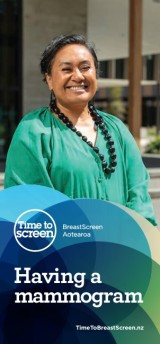
Having a mammogram BreastScreen Aotearoa, NZ, 2025
2024 versions available in Chinese (simplified), Hindi, Japanese, Korean, Sign language, Thai
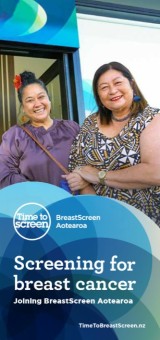
Screening for breast cancer – joining BreastScreen Aotearoa
HealthEd, NZ, 2025
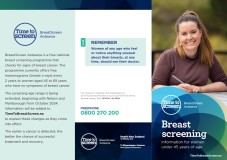
Breast screening – information for women under 45 years of age
BreastScreen Aotearoa, NZ, 2025
Credits: Healthify editorial team. Healthify is brought to you by Health Navigator Charitable Trust.
Reviewed by: BreastScreen Aotearoa, NZ
Last reviewed:

